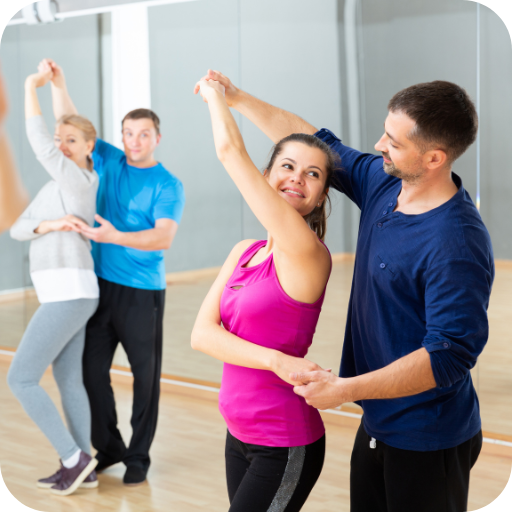Teaching WCS is more than just showing steps. Teaching also requires inspiring dancers, building confidence, and creating a positive learning environment. Whether you’re a seasoned pro or just starting to teach, developing your teaching skills will help you connect with your students and elevate your community. Here’s how to hone your teaching skills, build effective lesson plans, and create a memorable learning experience for your dancers.

Understanding the Role of a WCS Instructor
Teaching WCS goes beyond just demonstrating moves. As an instructor, you’re a mentor, a motivator, and a guide. Your role is to make your students feel comfortable, keep them engaged, and help them progress in their dance journey. It’s about creating a space where everyone feels welcome, whether absolute beginners or seasoned dancers looking to refine their skills.
Be a Positive Influence: Your attitude sets the tone for the class. A positive, encouraging approach helps students feel at ease and open to learning. Celebrate small victories, offer constructive feedback, and maintain an upbeat vibe that keeps everyone motivated.
Stay Approachable: Teaching isn’t about being the perfect dancer—it’s about connecting with your students. Stay approachable and open, and ensure your students feel comfortable asking questions or seeking clarification. A friendly demeanor goes a long way in building trust and rapport.
Be Adaptable: Every class is different. You’ll encounter students with varying skill levels, learning styles, and needs. Be ready to adjust your teaching methods on the fly, offering alternative explanations or breaking down moves further if needed.
Building Effective Lesson Plans: A well-structured lesson plan can make or break a class. Your plan should keep the class moving quickly, cover essential skills, and make learning enjoyable. Here’s how to create a lesson plan that hits all the right notes:
Start with Clear Objectives: Before stepping into class, know what you want your students to learn. Whether it’s a new pattern, a specific technique, or an improving connection, having clear objectives will help you stay focused and on track.
Keep It Simple: Especially with beginners, focus on one or two main skills per class. Trying to cover too much at once can overwhelm students and leave them feeling lost.
Build on What They Know: Quickly review what students have learned before introducing new material. This helps reinforce previous lessons and creates a smooth transition into new concepts.
Break Down the Moves: When introducing a new move or concept, break it down into small, manageable steps. This makes the material more digestible and gives students a sense of progression as they master each part.
Demonstrate and Explain: Show the move first, then explain it step by step. Use clear, simple language and avoid overloading students with technical jargon. Show the move from different angles so students can see what’s happening from all sides.
Practice Time: After demonstrating, give students plenty of time to practice. Walk around the room, observe, and offer individual feedback. Use this time to address any common issues and offer tips to help students refine their movement.
Keeping it entertaining
Use Different Teaching Methods: Not all students learn the same way. Some are visual learners, others need to feel the movement, and some benefit from verbal explanations. Incorporate different teaching methods to reach all your students:
Visual Demonstrations: Show the move multiple times and from different angles.
Tactile Learning: Use gentle physical guidance when appropriate to help students feel the correct movement or connection.
Verbal Cues: Use simple, memorable verbal cues that help students remember key points of a move or technique.
Keep It Fun and Engaging: Learning should be enjoyable! To keep your class engaged and relaxed, add elements of fun. Use humor, play music that energizes the room, and encourage student interaction.
Use Games and Challenges: Incorporate mini-challenges or games that allow students to practice in a less structured way. This makes learning fun and helps reinforce the skills in a more natural setting.
Rotate Partners Frequently: Rotating partners keeps the class dynamic and helps students learn to adapt their dancing to different partners, an essential skill in WCS.
Wrap Up with a Recap and Q&A: End each class with a quick recap of what was covered and open the floor for questions. This reinforces the material and allows students to clarify anything they’re unsure about.
Encourage Feedback: Ask students what they enjoyed and what they found challenging. Use this feedback to tweak future lessons and improve your teaching approach.
Providing Feedback and Encouragement: Feedback is a powerful tool in the learning process, but it needs to be delivered thoughtfully. The goal is to help students grow without discouraging them. Here’s how to provide effective feedback:
Be Specific and Constructive: Instead of saying, “That was wrong,” explain what needs adjusting and how to fix it. For example, “Try to keep your frame tighter here; it will help your connection.”
Highlight Positives First: Start by pointing out what the student is doing well before offering corrections. This builds confidence and prevents feedback from feeling too critical.
Use a Balanced Approach: Mix positive feedback with constructive suggestions. Too much correction can overwhelm students, while too much praise without guidance won’t help them improve.
Personal Development
Continuing Your Education: Great instructors are always learning. Stay current with WCS trends, keep honing your skills, and explore new teaching techniques. Attending workshops, taking classes from other instructors, and watching instructional videos can all provide fresh insights and keep your teaching approach evolving.
Attend Instructor Training: Many major WCS events offer training sessions covering teaching techniques, musicality, and more. These sessions can provide valuable tools and insights to bring back to your community.
Learn from Feedback: Just as you provide feedback to your students, seek feedback on your teaching. Ask for input from your students, co-teachers, or mentors to identify areas for improvement.
Keep Dancing: Remember to keep dancing yourself! Staying active in your practice helps you remain connected to what your students are experiencing and allows you to keep refining your style and technique.
Final Thoughts on Developing Teaching Skills
Teaching West Coast Swing is a rewarding way to contribute to your community and share your love of dance. By developing strong teaching skills, you can create classes that are not only educational but also engaging, supportive, and fun. Focus on clear communication, keep things positive, and never stop learning—your students will thank you, and your community will thrive. With the right approach, you can inspire dancers at every level and create a welcoming environment where everyone feels excited to learn and grow.
